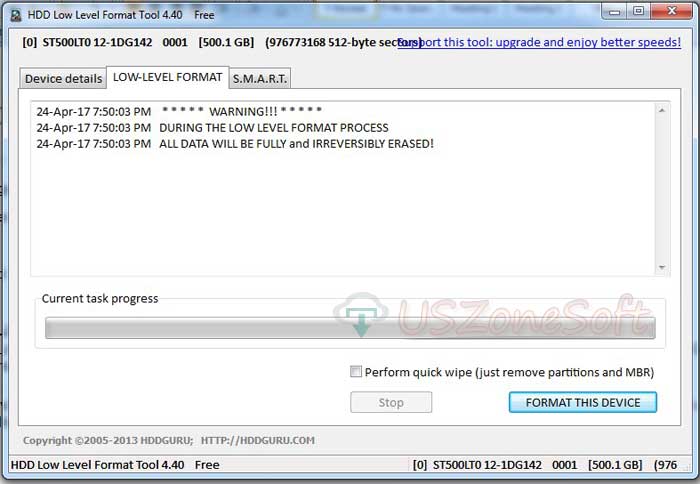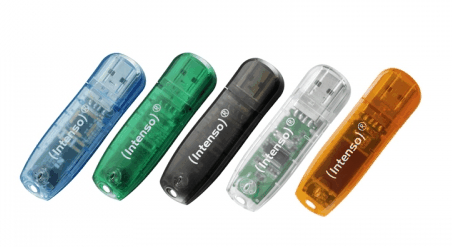Best Windows Format Tool
The best solution to the mentioned above problems is to format Toshiba flash drive correctly. Generally, the USB flash drive has two main file systems: FAT32 and NTFS. Choose the right file system to format Toshiba USB drive. So we are going to introduce you two ways to fix this problem: Disk Management and the Toshiba flash drive format tool. Free USB Disk Storage Format Tool for Microsoft Windows XP, Windows Vista, Windows 7, Windows 8, and Windows Server 2012/2008/2003. Features: Quick format and safe format.
How can I format a large hard drive with FAT32 'I have a 250GB external hard drive and I tried to format it into FAT32. But Windows 10 Disk Management tool failed to do this job because the hard disk drive is larger than 32GB. Is there any third-party FAT32 formatter or format tool can help?' When working from a Windows environment, you may experience difficulty using the default Windows format tool to format your large external hard drive or USB drive as Fat32. It happens because 32GB size limit exists on FAT32 formatting. But don't worry!
Here is third-party free FAT32 formatter can help you complete this job with no obstacle. What is the best FAT32 format tool Actually, there is a long list of FAT32 formatter support to format large hard drives to FAT32 beyond 32GB size limit. But which is the best one? Here we would like to introduce you. We recommend it as the best FAT32 format tool for two reasons. First, it is free, powerful, safe, and easy to use. It can help you format external hard drive, USB flash drive or SD card into FAT32 in just simple steps.
And second, it has flexible and advanced format options. If there is data on your hard drive, it allows you to directly convert to FAT32 without formatting. So all your data will keep intact. Now, you can free download this FAT32 formatter and follow the tutorial below step by step to format your device with ease.
If you're installing a new hard drive, or need to wipe your drive clean for that 'fresh' feeling, you'll end up formatting your drive. Formatting will check the drive for errors, and prepare it for use. If a drive has data on it, formatting the drive will remove all of the pointers to your files. Note: Formatting doesn’t securely erase the contents of a hard drive.
With freely available and easy-to-use tools, anyone can successfully recover data from a formatted drive. See for information on wiping your hard drive clean. Formatting can take hours to complete, but it is a good option when you have a new or inherited drive that is not properly formatted, a drive overrun by malware or other software problems, or a drive in need of a fresh start before a Windows installation. Traditional, magnetic-platter hard drives as well as solid-state drives can be formatted.
Before you begin, be sure to on the disk before you format. Use Disk Management To partition and format your drive, you can use Windows' built-in tool called Disk Management. You can repartition and format your hard drives in Windows using the Disk Management tool.
Best Low Level Format Tool Windows 7


In Windows 7, click Start. Next, right-click Computer, then click Manage. The 'Computer Management' window will open. In the left pane, click Disk Management (under Storage). In Windows 8, right-click the Windows button, and select Disk Management.
If your disk is not initialized (as is sometimes the case with brand-new drives), you’ll be prompted to initialize it. If your disk is 2TB or more in size, select GPT; otherwise, stick with MBR. A list of all connected disk drives is displayed in the center.
Unpartitioned drives appear with solid black bars and the label 'Unallocated.' Partitioned drives appear with solid blue bars and a drive letter. Partitioning your drive To format an internal or external hard drive to use for backup or additional storage, the drive needs to be partitioned.
Partitioning divides your drive into sections, but you can choose to simply have one partition (a single section encompassing the entire drive). If your drive isn't partitioned, follow these instructions to partition it. Otherwise, skip down to the next section.
Right-click the black bar or the unallocated white space below it and select New Simple Volume Don't be dissuaded by the word, 'Volume.' It's just another term for 'partition'. Click Next. To create a single, whole-drive partition, make sure the 'Simple volume size in MB' value is the same as the 'Maximum disk space in MB' value.
Assign a drive letter of your choice. Select Format this volume. For File System, choose NTFS if you’ll be using the drive only with Windows machines. If you will be sharing the information on the drive with Macs, choose exFAT. Keep Allocation unit size at Default. Choose a name for the partition under Volume label. Do not select Perform a quick format or Enable file and folder compression.
Confirm your selections and click Finish. Formatting your partitions Once your drive is partitioned, each partition will have to be formatted with a filesystem. Luckily, the Disk Management utility makes this really easy.

Right-click the blue bar or the white space below it and select Format. Choose a name for the partition under 'Volume label.'
For File System, choose NTFS if you’ll be using this drive only with Windows machines. Linux machines can read unencrypted NTFS partitions as well.
If you will be sharing the information on this drive with Macs, choose exFAT. Keep 'Allocation unit size' at Default.
Do not select Perform a quick format or Enable file and folder compression. Confirm your choices. Formatting for a Fresh Windows Installation If you are formatting your primary hard drive with the intention of reinstalling Windows or restoring your PC to its factory-fresh state, you’ll need the restore disc(s) that came with your computer. If your computer manufacturer did not include restore media or you’ve misplaced it, contact the manufacturer directly for a replacement. You may also be able to create your own restore disc(s) or reinstall Windows from a factory-created partition on your hard drive; consult your computer’s documentation for details. Insert your Windows installation disc or restore disc into your disc drive and restart your computer. For instructions on booting to your recovery partition, review your system documentation.
If you are using a manufacturer’s factory restore disc or hard-drive recovery partition, follow the prompts to initiate the restoration process. Unless stated otherwise, your drive’s primary partition will be formatted and returned to its factory-fresh state. If you are using a Windows 7 installation disc, select your language, accept the Windows license terms, and select Custom (advanced) when prompted. Select 'Drive options (advanced)' to format a drive from the Windows installer. Delete any partitions you want to remove by selecting them, clicking Drive options (advanced), and clicking Delete.
Create new partitions by selecting unallocated space, clicking Drive options (advanced), and clicking New. Select Format after creating your partition(s).
After formatting is complete, click Next to start the Windows installation. Windows may prompt you to accept the creation of a small, system-reserved partition-accept it.